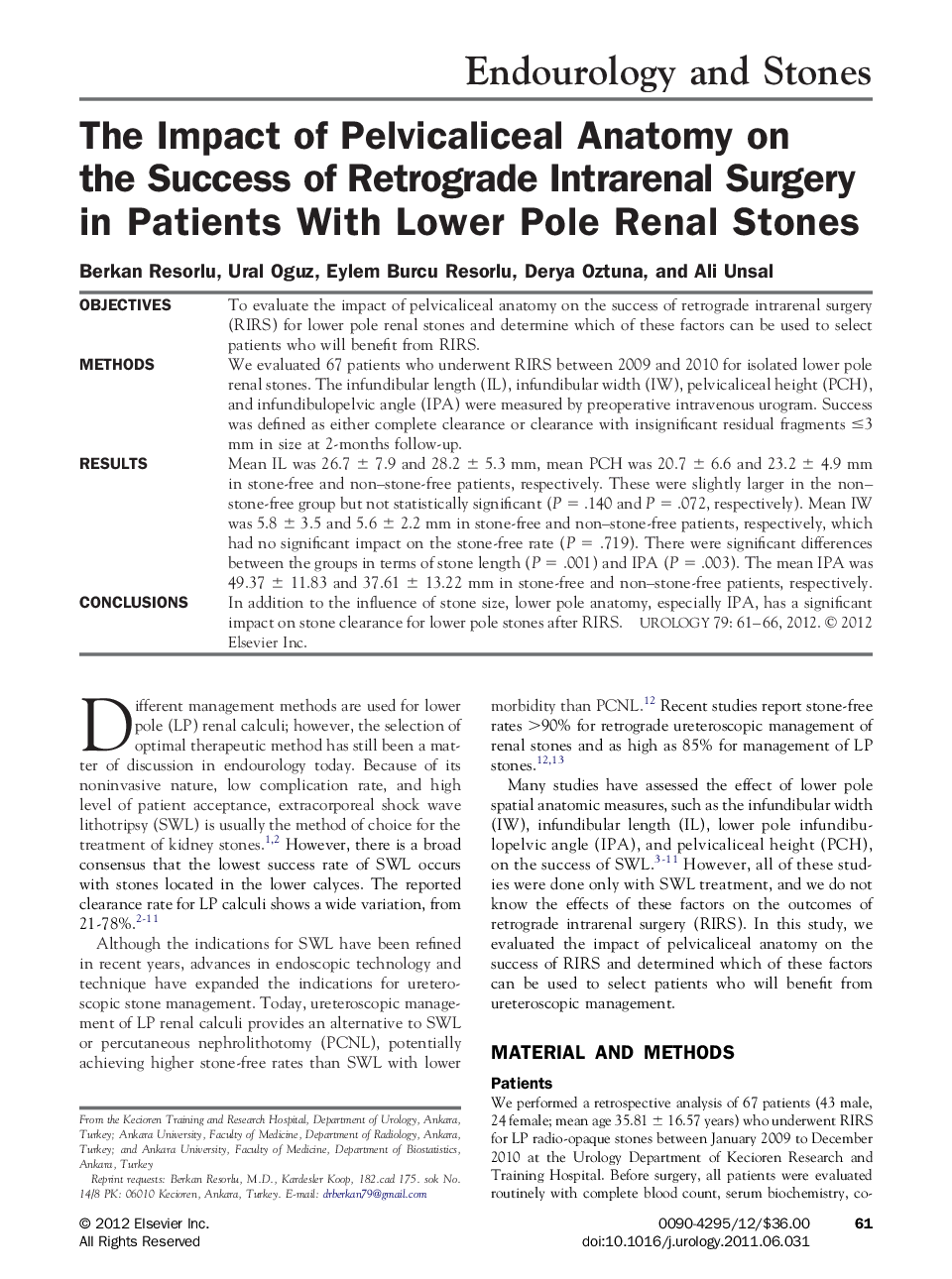| Article ID | Journal | Published Year | Pages | File Type |
|---|---|---|---|---|
| 3902195 | Urology | 2012 | 6 Pages |
ObjectivesTo evaluate the impact of pelvicaliceal anatomy on the success of retrograde intrarenal surgery (RIRS) for lower pole renal stones and determine which of these factors can be used to select patients who will benefit from RIRS.MethodsWe evaluated 67 patients who underwent RIRS between 2009 and 2010 for isolated lower pole renal stones. The infundibular length (IL), infundibular width (IW), pelvicaliceal height (PCH), and infundibulopelvic angle (IPA) were measured by preoperative intravenous urogram. Success was defined as either complete clearance or clearance with insignificant residual fragments ≤3 mm in size at 2-months follow-up.ResultsMean IL was 26.7 ± 7.9 and 28.2 ± 5.3 mm, mean PCH was 20.7 ± 6.6 and 23.2 ± 4.9 mm in stone-free and non–stone-free patients, respectively. These were slightly larger in the non–stone-free group but not statistically significant (P = .140 and P = .072, respectively). Mean IW was 5.8 ± 3.5 and 5.6 ± 2.2 mm in stone-free and non–stone-free patients, respectively, which had no significant impact on the stone-free rate (P = .719). There were significant differences between the groups in terms of stone length (P = .001) and IPA (P = .003). The mean IPA was 49.37 ± 11.83 and 37.61 ± 13.22 mm in stone-free and non–stone-free patients, respectively.ConclusionsIn addition to the influence of stone size, lower pole anatomy, especially IPA, has a significant impact on stone clearance for lower pole stones after RIRS.
